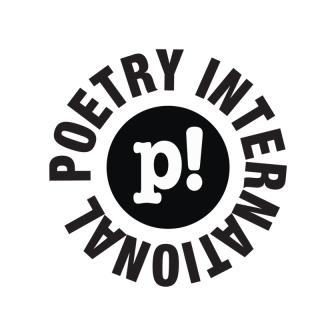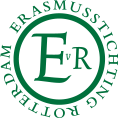Article
Translation as the art of intimacy

January 18, 2006
Up until then, I had assumed, with the poet Denise Levertov, that “I would never attempt to translate . . . poems that I could not at all imagine myself to have written”. I believed then as I still do today – that to make a text one’s own one has to encounter it deeply, embracing its beauties and its flaws, ultimately giving oneself over to it entirely. It seemed to me at the time that such total surrender to the words of another required a fundamental affinity for that other’s voice. Yet here I found myself translating poetry that I would not – could not – have written, and that I was not even sure I fully understood. Religious lyrics infused with a visionary wildness, Zelda’s poems were utterly unique, not part of any poetic school in Hebrew letters. In both sensibility and form, they were not just unlike anything I might have written but distinct from anything I had read – as the poet herself was very different from anyone I had known.
Who was Zelda? The daughter and granddaughter of prominent Hasidic rabbis from the Habad dynasty, Zelda Schneurson was an only child, born in Russia in 1914. When she was twelve, she immigrated with her family to Palestine; shortly afterwards, both her father and grandfather died. In Jerusalem, where the family had settled, Zelda attended a school for religious girls and later a teachers’ college. It was during her years at the college that she began to write and publish poetry.
At the age of eighteen Zelda moved with her mother to Tel Aviv, where she took private painting lessons and befriended other young artists. When her mother remarried and relocated to Haifa in 1933, Zelda once again accompanied her. In Haifa she developed a love for the landscape of Mount Carmel, to which she paid homage in many poems.
Zelda left her mother’s home for the first and only time in 1935, to pursue her dream of studying painting in Jerusalem. She worked as a housepainter to earn money, but jobs were scarce and she was unable to save enough for tuition. When her mother became ill, she returned to Haifa to care for her, never having had the chance to study art formally. She continued to paint on her own, however, and to write poetry and teach in an elementary school.
In the early 1940s, after her mother was widowed again, the two women returned to Jerusalem, this time to stay. They settled in a small, dilapidated, ground-floor apartment in the religiously mixed neighborhood of Kerem Avraham, where Zelda taught school until 1950. That year she married Hayim Arye Mishkovsky, and the couple made their home with Zelda’s mother in the Kerem Avraham flat. It was there that Zelda ministered to her mother until her death in 1965 and also cared for Hayim, who became ill shortly after their marriage.
Once married, Zelda gave up teaching and began writing more prolifically and intensely. Hayim encouraged her to publish, and in 1967 her first book of poems was released to great acclaim. It was dedicated to her father and mother and contained many poems about them and about her childhood. Her second book was published shortly after Hayim died, in 1971, and was dedicated to him. It was to be followed by four more volumes, each of them a critical and popular success. Hayim’s death was devastating to Zelda, and the later books include many poems to him, giving voice to the deep sorrow and grief that remained with her until the end of her life.
Five years after she was widowed, Zelda moved to a street that bordered the Orthodox area known as Sha‛arey Hesed and the mixed neighborhood of Rehavia. Situated at the boundary between two worlds, Zelda’s new location was more open to the many nonreligious friends who were among her frequent guests. The change proved felicitous in another way as well: the new apartment let in more daylight, which, as the poems reveal, was a healing presence for her.
Zelda and Hayim had no children, but after Hayim’s death Zelda began taking in boarders – young women, often students, whom she treated like daughters. She was extremely devoted to these companions, as they were to her, and she supported them economically and in many other ways, even providing them with wedding celebrations. During her last years, when she suffered from cancer, she was surrounded by these women and their families, and by her many other friends. Her final book, completed not long before her death in 1984, was dedicated to “the friends of my soul”.
Although she lived her entire life within the strictures of ultra-Orthodoxy – dressing modestly and, once married, donning a wig – Zelda’s admirers came from many corners of the heterogeneous and predominantly secular Israeli society. Her six books of mystical-religious verse were all bestsellers, meriting multiple reprintings and garnering numerous literary awards, including the prestigious Bialik and Brenner Prizes. Kibbutzniks, yeshiva students, academics, and soldiers – people of all ages, religious orientations, and political persuasions – were among her avid fans.
I, too, eventually became one of Zelda’s admirers, though I could not have predicted that in the beginning. The first time I opened a book of her poems, I was struck at once by their emotional power and their density; I was drawn to the work but not always sure what to make of it. One of the things I noticed right away, and which became a source of fascination and puzzlement to me, was the abundance of seemingly symbolic figures that populated these poems. I am not speaking here of Zelda’s frequent borrowings from classical Jewish texts – biblical, talmudic, midrashic, liturgical, kabbalistic, and Hasidic – which are accessible to readers familiar with Jewish sources. I refer, rather, to images that seem drawn from elsewhere, elements of the natural world such as the strange plant, the golden fish, the enchanted bird, the black rose, the orange butterfly simple nouns matched with plain adjectives, some of them preceded by the definite article, lending them an archetypal air. Where exactly had these figures come from? From which realms of folklore, fable, fairy tale? And what were they doing here?
I was never to find the answers to these questions because the sources I was looking for did not exist. Eventually I would come to see that Zelda’s poems contain a world of personal symbols – images at once evocatively sensual and suggestive of a deep spirituality – which have great resonance within the poet’s oeuvre but which are not necessarily rooted outside of it.
In the early days of translating Zelda’s poems, I was hungry for information, not just about their imagery but about every aspect of their contexts and origins. Finally, I emboldened myself and called Zelda on the phone, asking if I might visit her. She invited me to come to her home the next day.
I showed up at her doorstep in a knee-length skirt and a sleeveless blouse, a kerchief on my head. When Zelda opened her door to me, a bemused smile spread across her face. “You have a secular body”, she commented wryly, “but a religious head”. Her poems had not prepared me for her sense of humor; only later would I come to see how much she loved a good joke. But then, little about Zelda turned out to be predictable. In that first visit, I found her to be soft-spoken, unassuming, and even shy, but more than anything else, she was utterly original. She smiled frequently, and when it was time for me to leave she invited me to return. I accepted and returned not once but many times, I felt truly welcome in her home.
Over the course of a decade, I slowly came to know and develop a deep affection for the woman behind the poems – a woman who, despite the openness of her home, could be as mysteriously veiled and elusive as her work. When I finally dared to ask her directly about the images that had so engaged my initial curiosity, I found her not just reticent but surprised by my questions. I recall in particular a conversation that took place during one of my visits with her in 1978. The previous evening I had been to a meeting of a poetry reading group in which the members had been discussing an image in her poem ‘Facing the Sea’. Some people were convinced that the golden fish was a symbol of fertility, while others thought it represented prosperity and fortune. As I was in regular contact with the poet, I was delegated to ask her about it and report my findings to the group.
Zelda and I were having tea and cookies in her living room when I attempted to fulfill my obligation. Obviously startled by my query, she turned her eyes away from me and toward the window sill. Pointing to a newly blossoming geranium, she said, “See that plant in the window? It doesn’t speak.” She paused briefly before continuing, “Is it any less a miracle than a plant that speaks?”
Then she grew silent, and I waited for what felt like long minutes until she turned back to me. “Why,” she asked, looking at me with an expression of genuine bafflement, “do people always seek what is complicated? I always intend the simple. By ‘golden fish’ I meant a golden fish.”
Alas, much of what Zelda claims as simple can give her readers pause. Her erratic, mostly minimal use of punctuation creates a plethora of ambiguities, and not always fruitful ones; her line breaks, which tend to follow no pattern, are unreliable keys to syntax or meaning; her frequent shifts of tenses in the middle of sentences can make for dizzying narration. And this is not to mention the challenges of the words themselves – or, more precisely, of their unusual, sometimes jarring, pairings and clusters.
There were times, while translating Zelda, that I found myself tempted to give shape to seeming chaos or make linear what felt hopelessly circular; the desire to make the poems a bit easier on the reader was a hard temptation to resist. And to some extent, I did not resist: I punctuated for meaning and capitalized where English would have done so; I used line breaks and stanza breaks to convey pauses, interruptions, and other shifts of speech; I occasionally made tenses consistent where they had not originally been so. For the most part, however, I did not insert information into the poems to explain them from within, the exceptions being cases where it was necessary to make clear to the English reader what would have been obvious to those who read Hebrew.
Excerpted with permission from Marcia Falk’s introduction to her The Spectacular Difference: Selected Poems of Zelda. Cincinnati, Hebrew Union College Press, 2004.
In the eyes of a doctoral student on scholarship in Jerusalem of the 1970’s: an image of Zelda as a fascinating poet and person, one of a kind, a woman who noiselessly, without need of public relations, managed to stamp her mark on Israeli poetry.
Translation is an art of intimacy – even passion – but the story of my engagement with Zelda’s poetry had a less than romantic beginning. It was early 1974; I was living in Jerusalem on a grant to complete my doctoral thesis, a new translation of the biblical Song of Songs. The Song was a book I loved and very much wanted to make mine, but my research on it had not been going well. The Yom Kippur war, which had erupted in Israel a few months earlier, had put the country into turmoil; all resources, including academic ones, were at an ebb. The national economy as a whole had been upended, and I felt the effect on a personal level: as the Israeli lira inflated like a balloon, I watched my modest stipend waft off on its tail. And so, when I was approached by the editor of the international literary journal Ariel to translate the poems of an ultra-Orthodox Jewish woman known to her readers simply as Zelda, I did not stop to consider whether I would like these poems – and certainly not whether I would feel close enough to them to give them a new life in English. I accepted the commission and paid my rent the same day. Up until then, I had assumed, with the poet Denise Levertov, that “I would never attempt to translate . . . poems that I could not at all imagine myself to have written”. I believed then as I still do today – that to make a text one’s own one has to encounter it deeply, embracing its beauties and its flaws, ultimately giving oneself over to it entirely. It seemed to me at the time that such total surrender to the words of another required a fundamental affinity for that other’s voice. Yet here I found myself translating poetry that I would not – could not – have written, and that I was not even sure I fully understood. Religious lyrics infused with a visionary wildness, Zelda’s poems were utterly unique, not part of any poetic school in Hebrew letters. In both sensibility and form, they were not just unlike anything I might have written but distinct from anything I had read – as the poet herself was very different from anyone I had known.
Who was Zelda? The daughter and granddaughter of prominent Hasidic rabbis from the Habad dynasty, Zelda Schneurson was an only child, born in Russia in 1914. When she was twelve, she immigrated with her family to Palestine; shortly afterwards, both her father and grandfather died. In Jerusalem, where the family had settled, Zelda attended a school for religious girls and later a teachers’ college. It was during her years at the college that she began to write and publish poetry.
At the age of eighteen Zelda moved with her mother to Tel Aviv, where she took private painting lessons and befriended other young artists. When her mother remarried and relocated to Haifa in 1933, Zelda once again accompanied her. In Haifa she developed a love for the landscape of Mount Carmel, to which she paid homage in many poems.
Zelda left her mother’s home for the first and only time in 1935, to pursue her dream of studying painting in Jerusalem. She worked as a housepainter to earn money, but jobs were scarce and she was unable to save enough for tuition. When her mother became ill, she returned to Haifa to care for her, never having had the chance to study art formally. She continued to paint on her own, however, and to write poetry and teach in an elementary school.
In the early 1940s, after her mother was widowed again, the two women returned to Jerusalem, this time to stay. They settled in a small, dilapidated, ground-floor apartment in the religiously mixed neighborhood of Kerem Avraham, where Zelda taught school until 1950. That year she married Hayim Arye Mishkovsky, and the couple made their home with Zelda’s mother in the Kerem Avraham flat. It was there that Zelda ministered to her mother until her death in 1965 and also cared for Hayim, who became ill shortly after their marriage.
Once married, Zelda gave up teaching and began writing more prolifically and intensely. Hayim encouraged her to publish, and in 1967 her first book of poems was released to great acclaim. It was dedicated to her father and mother and contained many poems about them and about her childhood. Her second book was published shortly after Hayim died, in 1971, and was dedicated to him. It was to be followed by four more volumes, each of them a critical and popular success. Hayim’s death was devastating to Zelda, and the later books include many poems to him, giving voice to the deep sorrow and grief that remained with her until the end of her life.
Five years after she was widowed, Zelda moved to a street that bordered the Orthodox area known as Sha‛arey Hesed and the mixed neighborhood of Rehavia. Situated at the boundary between two worlds, Zelda’s new location was more open to the many nonreligious friends who were among her frequent guests. The change proved felicitous in another way as well: the new apartment let in more daylight, which, as the poems reveal, was a healing presence for her.
Zelda and Hayim had no children, but after Hayim’s death Zelda began taking in boarders – young women, often students, whom she treated like daughters. She was extremely devoted to these companions, as they were to her, and she supported them economically and in many other ways, even providing them with wedding celebrations. During her last years, when she suffered from cancer, she was surrounded by these women and their families, and by her many other friends. Her final book, completed not long before her death in 1984, was dedicated to “the friends of my soul”.
Although she lived her entire life within the strictures of ultra-Orthodoxy – dressing modestly and, once married, donning a wig – Zelda’s admirers came from many corners of the heterogeneous and predominantly secular Israeli society. Her six books of mystical-religious verse were all bestsellers, meriting multiple reprintings and garnering numerous literary awards, including the prestigious Bialik and Brenner Prizes. Kibbutzniks, yeshiva students, academics, and soldiers – people of all ages, religious orientations, and political persuasions – were among her avid fans.
I, too, eventually became one of Zelda’s admirers, though I could not have predicted that in the beginning. The first time I opened a book of her poems, I was struck at once by their emotional power and their density; I was drawn to the work but not always sure what to make of it. One of the things I noticed right away, and which became a source of fascination and puzzlement to me, was the abundance of seemingly symbolic figures that populated these poems. I am not speaking here of Zelda’s frequent borrowings from classical Jewish texts – biblical, talmudic, midrashic, liturgical, kabbalistic, and Hasidic – which are accessible to readers familiar with Jewish sources. I refer, rather, to images that seem drawn from elsewhere, elements of the natural world such as the strange plant, the golden fish, the enchanted bird, the black rose, the orange butterfly simple nouns matched with plain adjectives, some of them preceded by the definite article, lending them an archetypal air. Where exactly had these figures come from? From which realms of folklore, fable, fairy tale? And what were they doing here?
I was never to find the answers to these questions because the sources I was looking for did not exist. Eventually I would come to see that Zelda’s poems contain a world of personal symbols – images at once evocatively sensual and suggestive of a deep spirituality – which have great resonance within the poet’s oeuvre but which are not necessarily rooted outside of it.
In the early days of translating Zelda’s poems, I was hungry for information, not just about their imagery but about every aspect of their contexts and origins. Finally, I emboldened myself and called Zelda on the phone, asking if I might visit her. She invited me to come to her home the next day.
I showed up at her doorstep in a knee-length skirt and a sleeveless blouse, a kerchief on my head. When Zelda opened her door to me, a bemused smile spread across her face. “You have a secular body”, she commented wryly, “but a religious head”. Her poems had not prepared me for her sense of humor; only later would I come to see how much she loved a good joke. But then, little about Zelda turned out to be predictable. In that first visit, I found her to be soft-spoken, unassuming, and even shy, but more than anything else, she was utterly original. She smiled frequently, and when it was time for me to leave she invited me to return. I accepted and returned not once but many times, I felt truly welcome in her home.
Over the course of a decade, I slowly came to know and develop a deep affection for the woman behind the poems – a woman who, despite the openness of her home, could be as mysteriously veiled and elusive as her work. When I finally dared to ask her directly about the images that had so engaged my initial curiosity, I found her not just reticent but surprised by my questions. I recall in particular a conversation that took place during one of my visits with her in 1978. The previous evening I had been to a meeting of a poetry reading group in which the members had been discussing an image in her poem ‘Facing the Sea’. Some people were convinced that the golden fish was a symbol of fertility, while others thought it represented prosperity and fortune. As I was in regular contact with the poet, I was delegated to ask her about it and report my findings to the group.
Zelda and I were having tea and cookies in her living room when I attempted to fulfill my obligation. Obviously startled by my query, she turned her eyes away from me and toward the window sill. Pointing to a newly blossoming geranium, she said, “See that plant in the window? It doesn’t speak.” She paused briefly before continuing, “Is it any less a miracle than a plant that speaks?”
Then she grew silent, and I waited for what felt like long minutes until she turned back to me. “Why,” she asked, looking at me with an expression of genuine bafflement, “do people always seek what is complicated? I always intend the simple. By ‘golden fish’ I meant a golden fish.”
Alas, much of what Zelda claims as simple can give her readers pause. Her erratic, mostly minimal use of punctuation creates a plethora of ambiguities, and not always fruitful ones; her line breaks, which tend to follow no pattern, are unreliable keys to syntax or meaning; her frequent shifts of tenses in the middle of sentences can make for dizzying narration. And this is not to mention the challenges of the words themselves – or, more precisely, of their unusual, sometimes jarring, pairings and clusters.
There were times, while translating Zelda, that I found myself tempted to give shape to seeming chaos or make linear what felt hopelessly circular; the desire to make the poems a bit easier on the reader was a hard temptation to resist. And to some extent, I did not resist: I punctuated for meaning and capitalized where English would have done so; I used line breaks and stanza breaks to convey pauses, interruptions, and other shifts of speech; I occasionally made tenses consistent where they had not originally been so. For the most part, however, I did not insert information into the poems to explain them from within, the exceptions being cases where it was necessary to make clear to the English reader what would have been obvious to those who read Hebrew.
Excerpted with permission from Marcia Falk’s introduction to her The Spectacular Difference: Selected Poems of Zelda. Cincinnati, Hebrew Union College Press, 2004.
© Marcia Falk
Sponsors
























